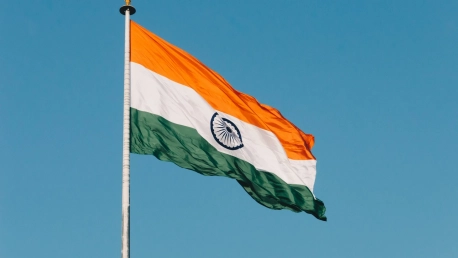Bankruptcy serves as a critical legal tool for those grappling with overwhelming debt. It functions differently across countries, shaped by varying legal frameworks, cultures, and economies. In contrasting the bankruptcy laws of India and the United States, we observe distinctive methodologies and consequences for debtors in these nations. U.S. bankruptcy is characterized by its structured chapters, offering options for both liquidation and reorganization, with specific rules for individuals and corporations. Conversely, India’s bankruptcy measures, although reformed through the Insolvency and Bankruptcy Code (IBC) of 2016, focus on resolving insolvencies and maintaining business continuity rather than liquidating assets. Such differences highlight the nations’ divergent approaches to economic recovery and debtor relief. Understanding these disparities is crucial for stakeholders navigating the complex arena of cross-border insolvency and for individuals seeking respite from financial distress.
Bankruptcy in India
The Social and Financial Impacts of Bankruptcy
In India, declaring bankruptcy carries a heavy social and cultural stigma. It is often equated with personal failure, leading to social exclusion and damage to both personal and professional reputations. The repercussions extend beyond social isolation; financially, it can result in damaged credit history, hindering one’s ability to borrow money or secure investment in the future. This amplifies the distress of financial hardship, making bankruptcy a particularly tough choice for Indians. The stigma is deeply ingrained in society, affecting not just the individuals but also their families and businesses. As a result, a bankruptcy declaration is not taken lightly, and many may avoid it until absolutely necessary to evade the potential lasting consequences. Because of these societal attitudes, the path to financial recovery becomes even more challenging, adding to the arduous journey of overcoming fiscal challenges.
Legal Framework and Procedure
In India, the insolvency process thoroughly examines a debtor’s finances, with assets and liabilities coming under close scrutiny by courts and creditors. The system aims to equitably resolve debts, but it’s a demanding and typically slow process. Legal reforms, like the 2016 Insolvency and Bankruptcy Code (IBC), have streamlined proceedings, offering a more methodical path for both recovery for creditors and relief for debtors. However, the process remains complicated, challenging the legal system to find an equitable balance that meets creditor claims while giving debtors a feasible path to financial recovery. Each case winds through a legal maze, reflective of the delicate interplay between economic justice and efficient resolution, underscoring the ongoing evolution of Indian bankruptcy law.
Bankruptcy in the United States
Chapter 7: Liquidation Bankruptcy
Chapter 7 bankruptcy in the U.S. is designed as a legal route toward regaining financial stability by liquidating a debtor’s non-exempt property. This process, while understandably challenging, is focused on absolving individuals and businesses from the majority of their unsecured debts, enabling a new financial beginning. The liquidation aspect, however, is carefully balanced to protect the debtor from complete loss; essential personal items like household goods and clothing are not typically subject to a sell-off. These exemptions offer a cushion against the potential hardship of the process, ensuring that debtors retain the basics to maintain a modest standard of living post-bankruptcy. Thus, although Chapter 7 involves asset liquidation, it is structured to facilitate debt relief without stripping debtors of their fundamental needs.
Chapter 11: Reorganization for Corporations
Chapter 11 bankruptcy serves as a crucial tool for companies in distress, allowing them to stay in business while they restructure their debt. This process is designed to support a business’s recovery and continued operation, balancing the interests of the entity with those of its creditors. It offers a platform for businesses to renegotiate debt terms, potentially lessen financial burdens, and find a pathway back to profitability. The essence of Chapter 11 is to rehabilitate struggling companies, granting them the ability to overcome financial difficulties. This legal provision aims at saving jobs and preserving the going-concern of businesses, while providing a fair arrangement for repayments to creditors. With Chapter 11, companies receive the chance to transform their financial woes and work toward a stronger, revitalized future.
Chapter 13: Individual Debt Adjustment
Chapter 13 bankruptcy is designed for individuals who have a consistent income and desire to repay their debts over a period of three to five years through a feasible payment plan. This type of bankruptcy is particularly beneficial for those aiming to avoid property liquidation while protecting their home from foreclosure. Through this legal process, debtors adhere to a repayment strategy tailored to align with their financial capabilities, which may lead to reduced debt obligations. Moreover, this court-supervised plan enforces strict financial discipline, fostering a pathway to economic recovery and stability, without immediately sacrificing valuable assets. Engaging in Chapter 13 bankruptcy can offer a structured route to debt management, providing a balanced approach between debtor responsibilities and the protection of their assets.
The Bankruptcy Process: India vs. United States
Cultural Perceptions and Legal Outcomes
In India, bankruptcy is heavily stigmatized, affecting social reputation and future credit prospects significantly. In contrast, the U.S. views bankruptcy through a more forgiving lens, emphasizing rehabilitation over punishment. These contrasting cultural attitudes impact not only individuals’ lives but also how they interact with insolvency laws. Americans may consider declaring bankruptcy a practical approach to resolving financial woes, while for Indians, it could spell ruin for both their economic and social futures. This divergence reflects broader differences in how the two societies perceive debt and financial failure. As a result, bankruptcy in India deters individuals from seeking help due to the fear of enduring shame and financial ostracism, whereas in America, it’s considered a second chance for those in debt.
Access to Bankruptcy and Its Challenges
In both India and the U.S., filing for bankruptcy presents significant hurdles for debtors. The legal processes involved are intricate, demanding a thorough understanding of complex systems. In India, the journey is made even more arduous by entrenched social stigmas, making the ordeal notably tough. Debtors confront an often punishing bureaucracy and legal labyrinth. The U.S. process, perceived as more accessible, still poses serious financial risks that necessitate careful planning and frequently the engagement of legal experts to avoid substantial loss. While the structural frameworks vary, the challenges in both nations stem from the need to wrestle with daunting legal protocols and manage the repercussions that follow bankruptcy filings. Despite the geographical divide, the common thread lies in the complex navigation of bankruptcy laws, where the guidance of attorneys may prove invaluable, and the impact of societal views in India adds an additional layer.
The Broader Implications of Filing for Bankruptcy
Impact on Credit and Future Financial Opportunities
Filing for bankruptcy impacts individuals and businesses alike, severely affecting their credit reports in countries including India and the U.S. This financial blemish typically lasts for several years, leading to lower credit ratings and restricted financial opportunities. Post-bankruptcy, securing loans and mortgages becomes more onerous, as credit scarcity drives up costs. Moreover, the stain of bankruptcy can deter lenders and business associates due to fears of fiscal instability. In essence, the shadow cast by bankruptcy extends beyond the immediate financial distress, making recovery a challenging path marred by skepticism from the financial fraternity and restrictive credit conditions. Thus, the journey to rebuild one’s financial standing post-bankruptcy is steeped in perseverance against lingering doubts and constrained economic possibilities.
Recovery and Restructuring Post-Bankruptcy
Navigating through bankruptcy can be a challenging yet transformative experience. It provides a chance for individuals and businesses to reset financially. Far from being a financial death sentence, it offers vital lessons that pave the way for more robust fiscal habits. This period is an opportunity to implement better spending strategies, engage in financial education, and work toward restoring good credit standing. Successfully emerging from bankruptcy showcases a debtor’s dedication to fiscal prudence and can be a positive sign to lenders. It suggests a person’s or a company’s growth in managing finances effectively, potentially opening doors to new lines of credit and investments as the restructured entity proves their capability in handling economic affairs with renewed vigilance.









